The Biomedical Visualization and Communication program attracts bright, open-minded students from different professional and educational backgrounds. Over 11 months, they work and play together to learn how to communicate health and science information. Each cohort is intentionally diverse to create an enriched learning experience, blending student educational backgrounds, skills, perspectives and lived experiences. Discover why these graduates joined the BMVC program, and read about their learning experiences and what they're doing now.
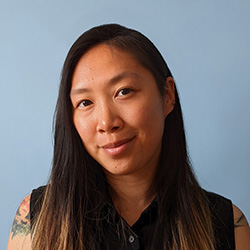
ACCESS Open Minds
Education/Experience
2021 BMVC Graduate
Graduate Diploma, Science Communication
Master of Science, Behavioural Neuroscience
When Cat was in grad school studying behavioural neuroscience, she realized there was a big gap in the general public’s understanding of science. Even explaining concepts to family and friends was a challenge.
Sensing that science communication and community engagement were her calling, Cat enrolled in a graduate diploma in science communication. While she describes the diploma as comprehensive, it didn’t offer the deep dive into visualization and art that she had hoped for.
She then discovered the BMVC program.
Before applying to the BMVC program, however, Cat wanted to ensure she wasn’t going to repeat what she had already learned. “There were things about the BMVC program that stood out – equity, diversity and inclusion in science communications, and ethics. Those really spoke to me.” The part-time, online format was also perfect since she was working full-time in Montreal.
During the program, a class about comics and graphic medicine proved to be an eye-opening experience. A doodler since she was little, Cat says, “When we started doing comics, something clicked and I thought, ‘This is it, this is something I want to pursue.’ Before, I didn’t think it was possible to use this art form to talk about health topics.”
Today, Cat continues to work for ACCESS Open Minds, a youth mental health research network, and is applying what she learned in BMVC. “I try to incorporate more illustrations or comics in the resources I create. What I really love is that I’m working together with youth and families to create more visual-based resources. That’s really exciting work for me.”
She’s also taking on freelance work. “A big goal for me was to create an online portfolio during the program.” She credits the BMVC team for their help. “They really wanted to help us achieve what we wanted to do. I felt seen and heard.”
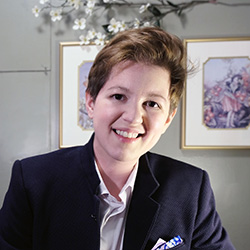
Simon Fraser University
Education/Experience
2021 BMVC Graduate
Professional Illustrator
Graphic Novelist
Associate Degree – Biology
When Milo entered the BMVC program at the start of 2021, he did so with the goal of becoming a medical illustrator. A graphic novelist and professional illustrator, he wanted to study science, and use his skills to support and advocate for neurodiverse, 2SLGBTQIA+ and transgender communities.
But he was completing the program at the end of 2021, Milo had so many opportunities in front of him, he had to turn a few down, including a book deal. “The opportunities have been unbelievable. The door just opened up for me,” he says.
It was the opportunity to pursue research that proved the most irresistible. In 2022, Milo will begin a Master of Science (Epidemiology) at SFU, where he’ll study health determinants of autism in Two-Spirit communities.
“One of the reasons I became interested in science communications is I see people from underprivileged socioeconomic positions unable to get their illnesses diagnosed because of a vocabulary barrier,” says Milo.
“I could have had a career in illustration and it would be have been comfortable and fun,” he adds. “The BMVC program has opened doors to advocacy and methods I can use to help other people. And It has empowered me to talk to those who are educated in science and research.”
Milo has also been invited to join the Two-Spirit Dry Lab, Turtle Island’s (Canada’s) first research group that focuses on the wellbeing of Two-Spirit and Indigenous people.
“It’s everything I could have dreamed of. I’m in the place I’m supposed to be.”
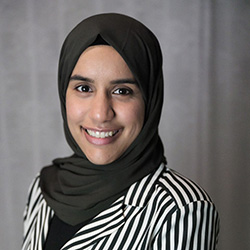
Research Assistant,
David Mowafaghian Centre for Brain Health
Education/Experience
2021 BMVC Graduate
Bachelor of Science (Biology)
As a woman of colour born and raised in Canada, Muna hasn’t had issues accessing healthcare. But having accompanied other women of colour new to Canada to their medical appointments, Muna recognizes not everyone enjoys the same access. “It goes beyond a language barrier – there are cultural differences. There’s a whole subset of our population that needs help but doesn’t know where to get it,” she says.
When the pandemic hit, Muna started a monthly online workshop designed to help educate young girls of immigrant backgrounds and women of colour about health, fitness and diet. “Bridging the gap between scientific literature and these groups, and making health information accessible and understandable was so rewarding, and knew I would love to do more,” she says.
While browsing the UBC Extended Learning website one day, she discovered the BMVC program. “The program seemed perfect. I thought, ‘It’s going to teach me the soft skills to translate and communicate knowledge in a way women of colour and new immigrants can understand,’” recalls Muna.
Before she started the program, Muna had been exploring other media beyond webinars to share information. “BMVC sparked my interest in podcasting and creating videos. The program not only enabled me to create these, it taught me the importance of knowing your audience to create an effective communications piece.”
Inclusivity and accessibility in biomedical communications also played a big part in Muna’s learning. “This was such an appealing aspect of the program, and it surpassed my expectations. Growing up, I would have loved to see a young girl wearing a head scarf in illustrations. I’m happy to see a new generation of biomedical communicators advocating for inclusivity.”
Working with a real client was also new for Muna. “The BMVC team did a very good job guiding us with our client’s relationship. We always had their full support,” she says.
Muna was recently accepted in the UBC Bachelor of Computer Science degree. Once she’s finished the 20-month program, she plans to continue working with youth and women of colour, and creating more podcasts and videos. Eventually, she’d like to have her own business, combining computer programming with the skills she acquired from BMCV in creating health and wellbeing apps tailored to the needs of marginalized groups.
When asked her advice to prospective students, Muna says, “Just go for it. Each and every one of the coordinators and instructors had our best interests at heart. They helped us reach our potential.”
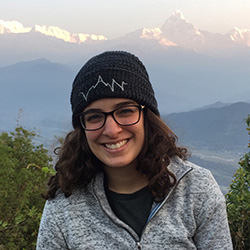
Education/Experience
2021 BMVC Graduate
Lab Manager, Scholarly Communications Lab
As a PhD student studying head impacts and brain injuries in hockey, Olivia Aguiar knows the work she’s doing is important and relevant to many communities, from players, coaches and hockey parents, to the wider science community. With a passion for understanding how health information is consumed and shared, she was interested in finding other ways to do more with her research and connect with communities she had collected data from.
A self-professed “science kid,” Olivia has always had a heart for the arts. Says Olivia, “I’ve always had this desire to talk about science through visualizations and writing, but I didn’t have a chance to study the arts, and felt I needed formal training.” When she discovered the BMVC program, she said her “world froze,” and she knew she had to apply for the program.
As someone who thrives on teams and collaboration, Olivia found the interdisciplinary nature of the cohort inspiring. “What attracted me to the program was the different professional and personal backgrounds. Having so many different perspectives and being immersed in this space and environment was amazing,” says Olivia.
It was the respect shown for these different perspectives that Olivia says was one of the biggest strengths of the program. “The BMVC team has the capacity to help you fulfill your goals and ambitions. If you come in knowing exactly what you want, they’ll help you get there. If you come in not knowing exactly where you want to go, you’ll feel supported.”
After what she describes as a transformative, life-changing year, Olivia dove deeper into science communications, also known as scicomm, and enrolled in two SFU courses. Through one of her instructors, she learned of a job opportunity at the Scholarly Communications Lab, an interdisciplinary team of researchers that studies how research is produced, disseminated and used. “It’s a nice foot in the door. I’m going from studying biomechanics to the scholarly and science communication fields,” says Olivia.
Olivia hopes to stay at the intersection of academia, science, scicomm and knowledge translation. “I’d like to be in a job that allows me to fuse my knowledge of sports injury prevention with communications. I’m interested in working with stakeholders in the community to understand the science of sports injuries, and together create better prevention solutions.”
Adds Olivia, “I was able to build my confidence in the program. I knew where I wanted to go – I just needed an opportunity to get there. I finally feel like I’m on the path to where I want to be.”
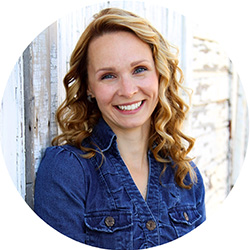
Education/Experience
2021 BMVC Graduate
Freelance Artist-in-Residence
Occupational Therapist
Rebecca arrived at the intersection of art and science along a path that took her in many directions. She began her career as an occupational therapy working with diverse populations, from infants to seniors. Early in her career, however, Rebecca found herself constantly circling back to the sciences and their intimate connection to art.
Over time, Rebecca evolved her career, and launched a successful freelance business in arts education with a focus on STEAM (science, technology, engineering, art and math). She was also an artist-in-residence with the Calgary School Board.
When COVID shut much of her business down, she started looking at programs that could combine her love of art and science – and the BMVC program proved the perfect fit.
During the program, Rebecca continued doing virtual freelance work, and created the Biomedical Design Lab, a course for middle school students. “I was taking everything I was learning – designing with empathy, researching user needs – and putting it into the Lab,” says Rebecca.
Studying anatomy in the program was also eye-opening for Rebecca. “The way the instructors taught anatomy compared to the way I learned 20 years ago is unbelievable. We learned not through a rehab medicine or western medical lens, but through an artistic lens. This was such a big takeaway for me.”
While she had intended to continue as a freelance biomedical artist and communicator after the program, instead she was approached for a role as a Senior Service Designer with a Toronto agency. “For my interview, I used my capstone project – working on a team, using rapid design, scoping client needs – to demonstrate my experience,” recalls Rebecca.
“Today, I’m integrating my experience in frontline health, visual art and design, and biomedical communications to make healthcare experiences more human-centered.”